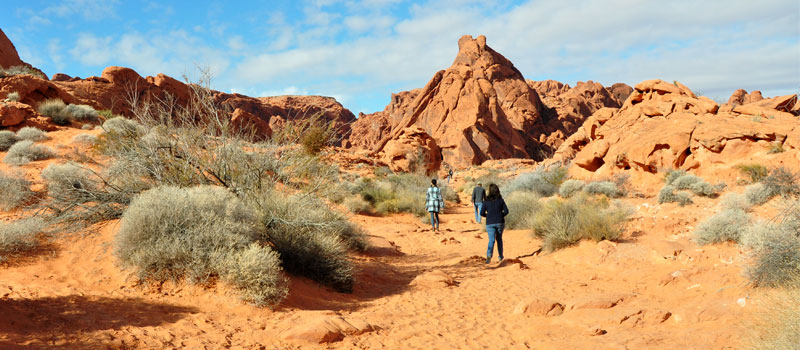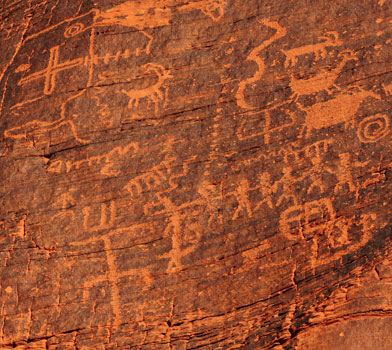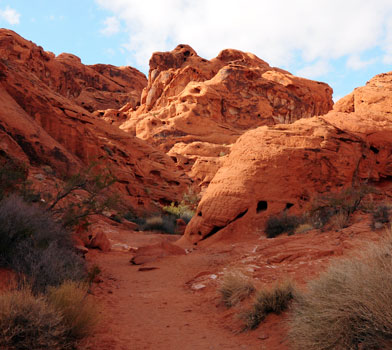Petroglyph Canyon Trail,
Valley of Fire State Park



Elevation
The Petroglyph Canyon Trail has a maximum elevation of 2,047 ft., a minimum elevation of 2,023 ft. and an elevation range of 24 ft.
Metrics
| [ A to B ] or [ B to A ] | |||
|---|---|---|---|
| Length 2 | Min Ele 3 | Max Ele 4 | Range 5 |
| 0.4 mi | 2,023 ft | 2,047 ft | 24 ft |
| [ A to B ] | |||
|---|---|---|---|
| Time 6 | Floors 7 | Gain 8 | Loss 9 |
| 9 min | 0.0 | 0 ft | 19 ft |
| [ B to A ] | |||
|---|---|---|---|
| Time | Floors | Gain | Loss |
| 9 min | 1.6 | 19 ft | 0 ft |
Calories
The following chart shows the total calories that you may expend on the trail while hiking in both directions. The chart is based on data derived from a statistical model of energy expenditure that relates gross weight, typical speed and trail topography.
Topo Maps
Download the PDF Petroglyph Canyon Trail topo map and the adjoining quads to plan your hike. These are full-sheet, 7.5 Minute (1:24,000 scale) topographic maps.
Adjoining 7.5' Quadrangle Legend
- Northwest Topo Map: Ute, NV
- North Topo Map: Weiser Ridge, NV
- Northeast Topo Map: Overton, NV
- West Topo Map: Piute Point, NV
- Topo Map: Valley of Fire West, NV
- East Topo Map: Valley of Fire East, NV
- Southwest Topo Map: Muddy Peak, NV
- South Topo Map: Bitter Spring, NV
- Southeast Topo Map: Echo Bay, NV
FAQ
What is the length of the Petroglyph Canyon Trail?
The length of the trail is 0.4 miles (0.6 km) or 771 steps.
How long does it take to hike the Petroglyph Canyon Trail?
A person in good physical health can hike the trail in 9 minutes in one direction and in 9 minutes in the opposite direction.
Warnings
Prevent tick bites: Treat clothing and gear, such as boots, pants, socks and tents with products containing 0.5% permethrin.
(cdc.gov)
- The Brown dog tick (Rhipicephalus sanguineus) may be present in this area. The Brown dog tick transmits Rocky Mountain Spotted Fever.
- The Rocky Mountain wood tick (Dermacentor andersoni) may be present in this area. The Rocky Mountain wood tick transmits Rocky Mountain Spotted Fever, Colorado Tick Fever, and Tularemia.
- The Western blacklegged tick (Ixodes pacificus) may be present in this area. The Western blacklegged tick transmits Anaplasmosis and Lyme Disease.
Footnotes
- Steps is a unit of distance equal to the sum of stride lengths that vary with the terrain.
- Length is the distance of the trail between the two trailheads, measured on the trail.
- Min Ele is the minimum elevation on the trail.
- Max Ele is the maximum elevation on the trail.
- Range is the difference between maximum and minimum elevation.
- Time is the typical total time required to hike the trail.
- Floors is the gain divided by twelve feet, the height of one floor.
- Gain (cumulative elevation gain) is the sum of every gain in elevation.
- Loss (cumulative elevation loss) is the sum of every loss in elevation.
